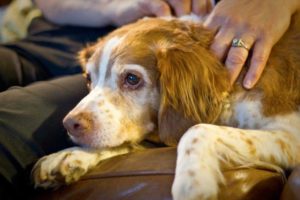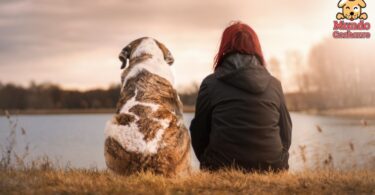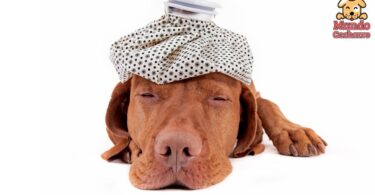
Indice
When a dog begins to be affected by vision problems, the concern of its human companions for its care increases markedly. And no wonder, because as with humans, the loss of vision in the dog affects how it interacts with its environment, making it more vulnerable to it.
However, this problem caused by illness or old age is not a cause of defeat for the dog, and much less should it be for his family. With the proper precautions, the dog will be able to resume its daily routine step by step. Does your dog have poor vision? We explain how to take care of it.
He understands what this new change in his life means.
The loss of vision The gradual or complete loss of the dog represents a big change in its daily life, and as expected, it will take time for the dog to adapt to its new condition, but that does not mean that the dog’s life is over or that it will not be able to cope with it.
Many owners make the mistake of taking this thinking as true, which leads them to overprotect or otherwise neglect the dog. Your furry companion needs your help and understanding to move forward, to adapt to his new condition. This makes understanding, patience and dedication on the part of the owner to the animal essential for its future to continue to be as bright as it was a few years ago.
Strategically manages the environment
A dog with vision problems is prone to colliding or injuring itself with objects around it, so modifications to certain aspects of the home cannot be delayed. However, this point only refers to that which may cause harm to the animal, and not to a complete remodeling of the animal’s environment.
Changes such as the location of furniture or the canine’s personal objects should be handled with care, since this can disorient the dog who already has in his memory an established image of what his home looks like.
Establish a routine
The first days and even months will be difficult for both, requiring an active participation of the person to help the dog to slowly orient itself. For this purpose, routine is the greatest ally. With a stable and well-structured routine, the dog will be able to adapt to his condition quickly, using his other senses and habit.
Never forget exercise and games
Whether the dog can see or not, play and exercise are a vital part of his life. It is important that these activities are always present in their daily life, even if they are complicated at first. The dog’sphysical and mentalhealth depend on it.
It is recommended to acquire toys that make noise or have a particular scent, in order to facilitate the interaction of the dog with them. In the case of exercise, a large place free of obstacles is usually the best option, in addition to using a special leash when taking your dog for a walk.
Image courtesy of (www.consumer.es), all rights reserved.







